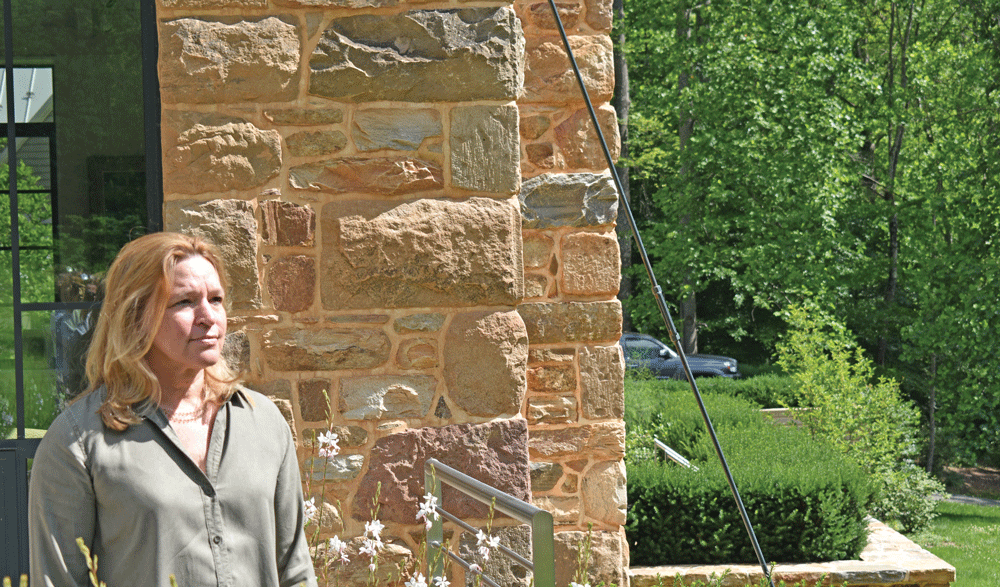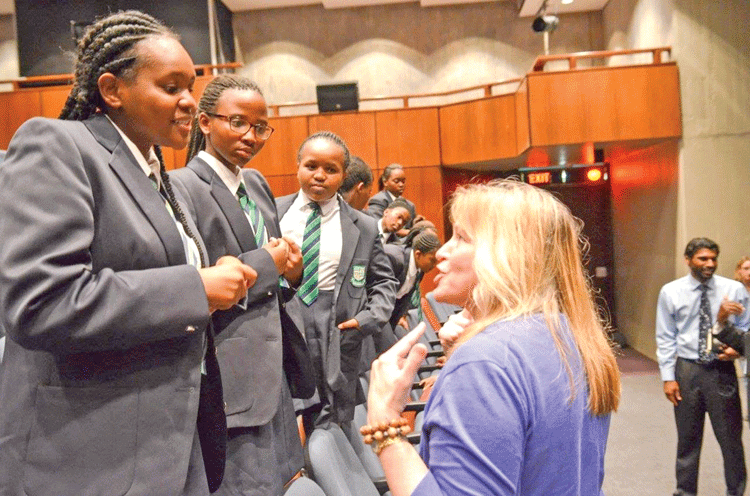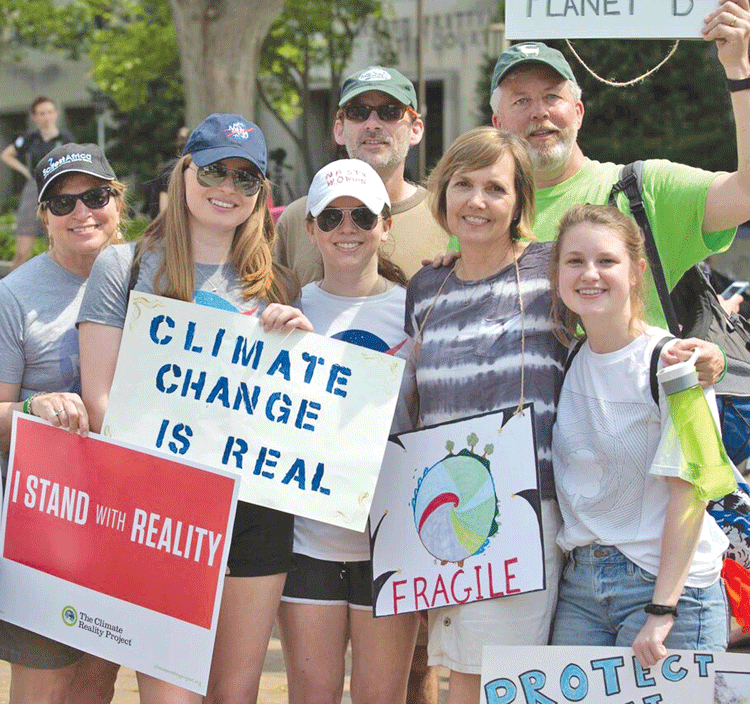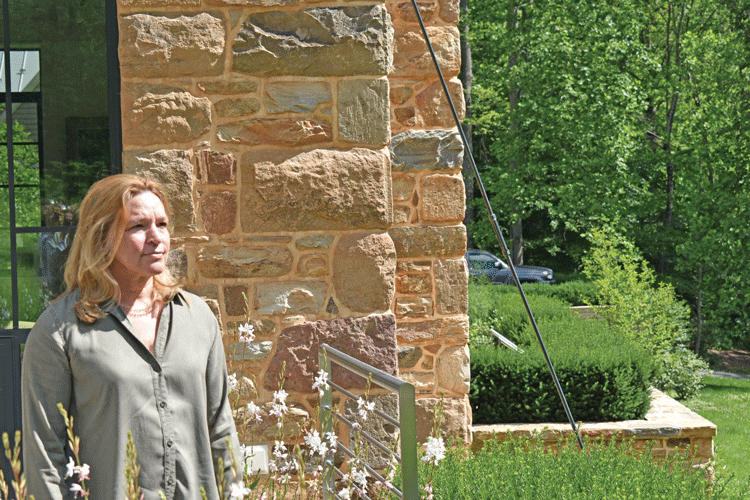Science, NASA & Shattered Glass

By Kerry Phelps Dale
Dr. Ellen Stofan regularly found herself the only woman in a room of older white men. “When you walk-in a room and no one looks like you, you wonder, ‘Do I belong here? They’re all old white guys.’”
The inevitability of the fact that no matter where she worked, studied, taught or spoke, the other experts, scientists and researchers would be overwhelming male and white undeniably influenced Stofan’s work ethic and ambition. “I was relatively young and a woman. I had to work twice as hard to be taken half as seriously.”
Against the odds Stofan cracked a lot of glass on her way to some of the most important positions in the field of space science and exploration and proceeded to shatter the glass ceiling when she was appointed Chief Scientist for NASA in 2013, where she advised the Administrator on science policy across the agency.
Until she stepped down from that position in December due to the change in administration, Stofan was often the face of NASA. An engaging, knowledgeable, impassioned Stofan traveled throughout the world to further NASA’s Journey to Mars goals.
“We need everybody on board to help with science, technology, engineering and math. And we especially need girls.” -Ellen Stofan
Stofan is now taking some time, enjoying her family and home outside of Middleburg in Fauquier County before committing herself to another job. Her passions to put humans on Mars, fight climate change and advocate for more diversity in the STEM fields all clamor for attention and keep her busy traveling to speak at universities, conferences, schools and science festivals all over the world.
Now at a crossroads of what could be the onset of a new career path she ponders the possibilities. “I don’t like the word retirement,” said Stofan. “I’m just considering what it is I want to do next,”
There was a time when Stofan’s next step was crystal clear. Her path to NASA was about as straightforward as one could be. Her genes, early exposure to space science and education all led her to the top of her field.

Self-proclaimed NASA brat, 4-year-old Stofan traveled with her rocket-scientist father and family from their home in Cleveland, Ohio, to the sunny, seaside destination of Cape Canaveral, Florida, to attend her first rocket launch. Much of her enthusiasm for the family adventure went up in smoke with the enormous explosion of the close-range launch.
From that day forward Stofan would not entertain a single thought of becoming an astronaut. “I can still see and hear the explosion when I close my eyes,” said Stofan.
When only 11 years old, the precocious Stofan began to alight on her future career. While tagging along on a geology class fieldtrip with her science-teacher mother who was pursuing a graduate degree, young Stofan fired questions at the professor.
She found the story that rock formations told about the earth’s history, both recent and ancient, fascinating. “I can pick up rocks, study them and make money? That’s the career for me,” she thought at the time.
A few years later Stofan attended a talk by well-known space scientist Carl Sagan about the study of the geology of Mars. Fusing her NASA roots with her love of rocks and the natural world, young Stofan was on the road to becoming a planetary geologist. “I knew then that’s what I wanted to do.” She was 14.
Getting first an undergraduate degree in geology at the College of William and Mary, where she now sits on their Foundation’s board of trustees, Stofan went on to Brown University to get both a master’s and doctorate in planetary geology. Her first job out of college lasted 11 years where she was a research scientist with Jet Propulsion Laboratory, the federally funded research and development center for NASA.
From there Stofan put in 13 years at Proxemy Research where she studied the surfaces of Earth, Venus, Mars and Saturn’s moon Titan. The pursuit of a NASA mission competition to send a boat to Titan to sail its seas of gasoline consumed the last four years of her time at Proxemy Research.
Stofan’s team’s proposal, though one of the three finalists, did not win the competition, a disappointment Stofan still feels. Not one for showing emotion, the subject of Saturn’s moon brings Stofan as precariously close to a display of disappointment as she will show professionally.
“You learn from failure,” allowed Stofan. “Sometimes you make mistakes and fail. But you don’t let it stop you.”
As if on a shooting star, on the heels of her Titan grant setback came the call. “Would you like to interview for the position of NASA Chief Scientist?” Ellen joked now, “I thought they had the wrong number.”
While fulfilling the demanding duties of NASA Chief Scientist, through surveys and open conversations, Stofan pursued the study and unveiling of the causes of such an obvious absence of certain types of people in science careers. Why aren’t there more women and a wider representation of races in the STEM fields and how do we change that?
She learned that certain groups simply are not invited into the STEM fields like their white male counterparts. From an early age, boys are directed toward these careers and girls are not.

Take a typical big box retail store, innocuous as it may seem. “There were NASA shirts displayed in the boys’ department, but not in the girls.’” Instead shirts with messages of kindness and friendship peppered the girls section. “That’s fine, but why can’t NASA shirts be marketed to girls, too?”
Growing up in an education-minded, supportive family with high expectations, Stofan believes role modeling and encouragement are key factors in leading girls into STEM fields of study.
But there are real obstacles that exist for many. The sometimes subtle bias in corporate, academic and social arenas has grabbed the attention of Stofan who is impassioned about widening the doors of higher learning institutions so that young women and minorities cannot only enter through them, but exit as well, STEM degree in hand.
Often the rate of women graduating with advanced degrees falls far short of those of men. Something happens between undergraduate studies and masters and doctorate degrees. Implicit bias at work, Stofan believes.
“We have huge challenges in front of us as a society, like climate change, cyber security and sending humans to Mars. If we’re only accessing half of our population, we’re never going to solve these tough challenges,” said Stofan. “We need everybody on board to help with science, technology, engineering and math. And we especially need girls.”
Climate change and the actions taken and not taken to slow its effects on the earth pester Stofan for attention, too. Nearly everything studied and discovered through NASA research has some impact on the understanding of Earth and its present challenges and everything points to an urgent need to take steps in carbon reduction.
“We have the knowledge to clean up the planet, to solve diversity issues. When I talk to children I see how incredibly positive they are. They understand we need to solve these problems,” said Stofan. “The next generation understands. They are getting it.” Stofan paused, “Unfortunately for the planet, it could be too late.”
There’s also her tireless pursuit of a human mission to Mars, the red planet, slated for the 2030s if budgets and research stay on target. A question Stofan continues to pursue, “Are we alone?” seems answerable by landing and living on Mars.
Known to have water, Mars has the potential to have sustained life. “I’m not talking little green men,” said Stofan. Microbial life, the beginning of complex organisms is what she hopes to find in the geology of Mars.
There is ample evidence of Stofan’s professional dedication to our planet and the people on it, and she reflects that and more in her personal life. As a family, Ellen, husband Tim Dunn and grown children Ryan, Emily and Sarah, walk the walk, march the marches.
All are passionate about their commitment to preserving our environment. They support local and global environmental efforts and husband Dunn’s business is focused on investing exclusively in environmentally progressive businesses.
The family’s custom home, completed three years ago, reflects their concern for and commitment to our planet. It is constructed of local and recycled materials, has solar panels, is geothermally heated and cooled, landscaped with native species and LEED certified Platinum. “We really worked hard to minimize its impact,” said Stofan.

She has called herself an armchair explorer, not one for the high adventure of space travel, but plenty adventurous enough to imagine and make the possibility of a journey to Mars and back a future reality for the next generations. For all of her high intensity work in a world most of us find unimaginable, there is a humble woman of enormous talent and capabilities who has made a place for herself in a male dominated world.
Stofan is a trove of the esoteric knowledge of a planetary geologist and the sensibilities of a world-minded, climate-conscious scientist and concerned citizen. She wants to be optimistic but cautions, “Climate change is something that is happening right now. It isn’t theoretical.”
Everyone has gazed awe-struck into the clear night sky full of stars wondering what’s out there. Stofan imagines a time when people will gaze back from Mars at a healthy Earth with the same awe. ML


